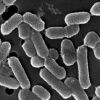-
About
- About Listly
- Community & Support
- Howto
- Chrome Extension
- Bookmarklet
- WordPress Plugin
- Listly Premium
- Privacy
- Terms
- DMCA Copyright
- © 2010-2025 Boomy Labs


 213511113
213511113
Listly by 213511113
The Best Things are always Fermented : Lactobacillus plantarum
The microscopic world and life within Kimchi.
Not all bacteria are bad, some are delicious!

Apart from my passion for microbiology, the avenues that lead me here was my love for Samyang Buldak noodles, where they manage to pack the flavour of Kimchi into noodles that can be prepared within 5 minutes. This made me look more into the Microbial life within Kimchi.

This is a traditional Korean fermented vegetable dish with one of the main ingredients often being Napa Cabbage. There are hundreds of variations of this dish, all depending on the ingredients (Vegetables, seasoning, spices) used, preparation, fermenting conditions, duration, and, what I'm looking into - the Microbial life within them.
The fermentation is initiated by natural microorganisms present in the ingredients when they are raw, or a starter culture is introduced.

There are a variety of microbes involved in the production of Kimchi. The main organisms involved in fermentation are lactic acid bacteria, genera Leuconostoc, Weissella, and Lactobacillus. When a starter culture is used, the microbe predominantly found throughout the process is Lactobacillus plantarum.
images- http://www.bacferm.com.au/silac/micro/micro.html

L. plantarum is one of largest genomes among lactic acid bacteria. Its commonly isolated from plant material and the human gastrointestinal tract.
It is rod-shaped with rounded ends, assembled in pairs/chains of varying lengths.
It is Gram positive, non-spore forming and anaerobic. It can grow in temperatures of 15 - 45 °C in pH levels of 3.2 and above .
L. plantarum has three plasmids, pWCFS101, pWCFS102 & pWCFS103 .
Image :https://www.sciencedirect.com/science/article/pii/S1319562X1500217X

L. plantarum is a facultative heterofermentative lactic acid bacterium that utilizes fermentatable carbon sources.
Its main function is the fermentative conversion of sugars and pyruvate into lactic acid or alcohol.
It is also auxotrophic,so it synthesizes few organic compounds, when it breaks down sugars and pyruvate.
Image : L. Plantarum metabolic pathways (https://journals.asm.org/doi/10.1128/AEM.03885-13)

L. plantarum is known to be used as probiotics.This may be able to treat infections and atopic dermatitis.
It has potential with antioxidant, β-galactosidase activity, anti-inflammatory, anti-obesity & antidiabetic properties.
Articles :
(https://www.sciencedirect.com/topics/food-science/kimchi)
(https://www.sciencedirect.com/science/article/pii/S1319562X1500217X)
(https://pubmed.ncbi.nlm.nih.gov/21338447/)
(https://www.frontiersin.org/articles/10.3389/fmicb.2019.00433/full)
There are a few isolated cases where when L. plantarum is used as a probiotic and thought to have caused Meningoencephalitis or bacteremia . Probiotics may be responsible for side effects like systemic infections, deleterious metabolic activities, excessive immune stimulation and gene transfer.
Research of these results are underway, however, no 2 strains of probiotics can be expected to have exactly the same clinical effect.
Articles :
Link 1
L. plantarum has the ability to adapt and thrive in various environments, the ability and capacity to be genetically manipulated, and the ability to ferment and degrade different materials.
L. plantarum is a very interesting and an important bacteria to study as it has a vast potential in various industries.
